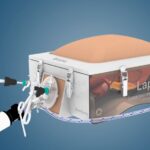For many individuals and couples dreaming of starting or expanding their families, the journey to parenthood may come with unique challenges. Whether due to fertility issues, same-sex partnerships, or personal preference, artificial insemination has become a viable and empowering option. Thanks to advancements in technology, insemination kits are now readily available for use in the comfort of your own home.
In this blog, we explore how artificial insemination kits work, what’s included in home insemination kits, and how they can support your conception journey.
What is an Insemination Kit?
An insemination kit is a collection of medical-grade tools designed to help deliver sperm closer to the cervix or directly into the uterus, depending on the method used. These kits allow for the process of insemination to take place without the need for clinical intervention in many cases.
Artificial insemination involves placing sperm into a woman’s reproductive tract through non-traditional means. This process can increase the chances of pregnancy, especially when timed correctly with ovulation.
Why Choose a Home Insemination Kit?
There are many reasons why people choose home insemination kits over visiting a clinic:
- Privacy: Conducting the procedure at home offers a more intimate and relaxed environment.
- Cost-effective: Clinics can be expensive. Kits offer an affordable alternative.
- Convenience: Scheduling appointments can be stressful. At-home options let you try at your pace.
- Inclusivity: They’re ideal for LGBTQ+ couples, single mothers by choice, and people with religious or cultural concerns around fertility treatment.
What’s Included in an Artificial Insemination Kit?
While specific contents may vary by brand, most artificial insemination kits include:
- Sterile syringes or applicators (often with soft, rounded tips)
- Speculum for easy cervix access (optional in some kits)
- Ovulation predictor kits (OPKs) to track fertility windows
- Collection containers for semen
- Instructional guides or video support
Some premium kits may also include fertility supplements, LH & HCG test strips, soft cervical cups, and reusable components.
How to Use a Home Insemination Kit Safely
- Track Ovulation: Use LH strips to find your most fertile days. Timing is key.
- Collect Sperm: This can be from a partner or donor. Ensure the semen is fresh and properly stored.
- Prepare for Insemination: Sterilize the tools if necessary. Follow kit instructions carefully.
- Insert Sperm Using the Syringe: Gently insert the syringe and deposit the sperm near the cervix.
- Lie Down: Remain in a reclined position for 15–30 minutes to help sperm travel.
Always ensure you’re following proper hygiene and sterilization procedures. If using donor sperm or considering multiple attempts, consult with a fertility specialist.
Are Insemination Kits Effective?
Success rates depend on several factors including age, timing, sperm health, and overall reproductive health. While clinical IUI (intrauterine insemination) may offer higher success in some cases, many have successfully conceived using home insemination kits.
On average, with well-timed insemination and good sperm quality, some users report conception within 3–6 cycles.
Who Can Benefit From Artificial Insemination Kits?
- Couples with male fertility challenges
- Lesbian couples
- Single women ready to conceive
- Those with physical or emotional discomfort with clinical settings
These kits can provide the opportunity for safe, dignified conception efforts at home.
Final Thoughts: Is a Home Insemination Kit Right for You?
Choosing to use an insemination kit is a deeply personal decision that empowers individuals and couples as they navigate their unique fertility journeys. It offers a sense of autonomy and privacy that many find comforting, especially when seeking alternatives to clinical procedures. Whether you’re just beginning to explore your fertility options, facing challenges with traditional conception, or simply looking for a more affordable, less invasive path to parenthood, artificial insemination kits can be a valuable resource. These kits are designed to provide convenience, flexibility, and greater control over the timing and process of conception, all from the comfort of your own home.
As always, it’s strongly recommended to consult with your doctor, OB-GYN, or a fertility specialist before beginning any insemination process. A medical professional can help assess your overall reproductive health, guide you in selecting the most suitable method such as IUI or ICI and ensure that the approach aligns with your personal health profile, goals, and timeline. Taking these steps can improve your chances of success and ensure a safer, more informed fertility experience.
- Understanding Insemination Kits: A Convenient Path to Parenthood
- we explore how artificial insemination kits work, what’s included in home insemination kits, and how they can support your conception journey.
- insemination kit, artificial insemination kit, home insemination kits
Related posts:
 How to Lose Weight Fast Naturally and Permanently ?
How to Lose Weight Fast Naturally and Permanently ?
 How Laparoscopic Simulators Improve Precision & Reduce Surgical Errors
How Laparoscopic Simulators Improve Precision & Reduce Surgical Errors
 How Antibiotics Work to Kill Bacteria and Prevent Infection!
How Antibiotics Work to Kill Bacteria and Prevent Infection!
 How Much Does Mole Removal Cost in Islamabad?Mole Removal Islamabad
How Much Does Mole Removal Cost in Islamabad?Mole Removal Islamabad
 Eight Key Things You Need to Know About Ultherapy Prime Today
Eight Key Things You Need to Know About Ultherapy Prime Today
 What You Should Know About Taking 125mcg Vitamin D3 Daily includes its potential to support immune function
What You Should Know About Taking 125mcg Vitamin D3 Daily includes its potential to support immune function
 Comprehensive Guide to IVF Treatment in Delhi at Sunrise Hospital
Comprehensive Guide to IVF Treatment in Delhi at Sunrise Hospital
 5 Essential Tips for Finding the Best Medical Marijuana Dispensary Near Me
5 Essential Tips for Finding the Best Medical Marijuana Dispensary Near Me







